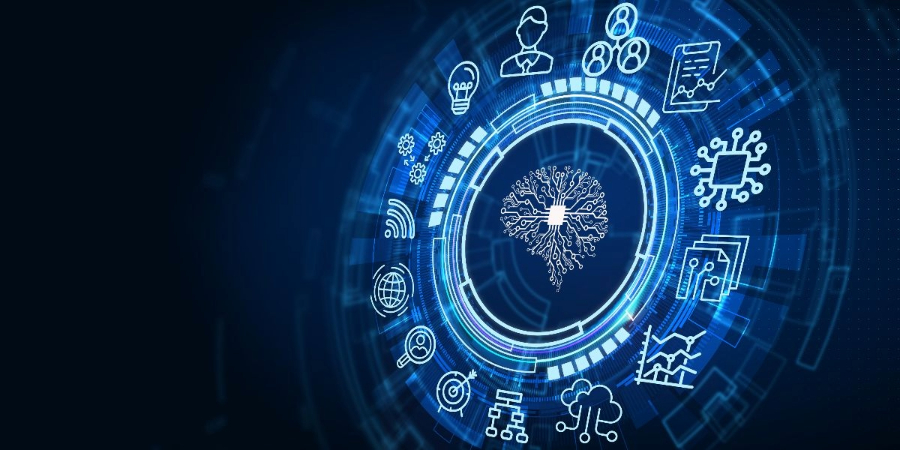Enhancing Enterprise Agility through AIOps: Strategies and Best Practices
The adoption of new commercial enterprise models with the aid of a corporation due to digital transformation has expanded the complexity of IT operations (ITOps). As a result, current IT tools can no longer meet employer demands. The biggest challenges ITOps face these days are:
- Poor people ride on purposes throughout geographies
- Lack of superb event management and no proactive monitoring
- More manual intervention and efforts, and minimal automation
- Inability of component-level drill down across technological know-how systems for a speedy trouble and root purpose analysis
- Lack of single-pane view of IT and commercial enterprise system metrics
Organizations have now started leveraging artificial talent (AI) for IT operations (AIOps) with APM (application overall performance monitoring) and other information sources to acquire insights that improve business outcomes.
AIOps is the use of synthetic intelligence (AI) for IT operations to enhance, help and automate the latter. It covers the strategic use of AI, analytics, and computing devices gaining knowledge of (ML) technologies throughout IT operations to simplify and streamline approaches and optimise the use of IT resources.
It can be viewed as a platform consisting of AI and ML engines, Big Data capabilities, and servers masking storage, compliance, infrastructure, provisioning, and backup. The AIOps platform helps in:
- Improving and automating tournament monitoring
- Ingesting both historical records and real-time streaming information from across the IT environment
- Filtering out the noise so only the most applicable statistics are analysed
- Better service management
- Modernising IT operations
- Implementing security operations (SecOps), network operations (NetOps), and development operations (DevOps) via the usage of AI to automate IT
Industry adoption of AIOps
According to ESC Research, nearly 30 percent of the enterprises surveyed design to make extensive investments in AIOps over the subsequent 12 to 18 months, and more than ninety percent anticipate spending a great deal or more on AI and computing device learning in 2023.
Gartner predicts that the variety of business leaders relying on AIOps platforms for automatic insights will enlarge by 10 instances by 2024.
As per an IDC report, through 2024, 30 percent of corporations will prolong interest networks throughout IT teams, inclusive of AIOps.
According to Research and Markets, the international market for AIOps structures is projected to attain US$ 22.9 billion by 2030, growing at a CAGR of 30.4 percent between 2022 and 2030.
The key goals of AIOps are
- Monitoring
- Event correlation
- Auto ticketing
- Anomaly detection
- Business IQ
- Business transactions monitoring
- Auto remediation
RCA/Diagnostics
The AIOps framework
AIOps offerings focal point on optimisation, simplification, automation, and removing to improve the resilience of IT systems, main to a superior purchaser experience. The AIOps framework allows proactive end-to-end commercial enterprise — IT monitoring and analytics, next-gen tournament management, and robotic process automation. The goal is to simplify IT operations.
Let’s take a look at the factors of the framework of an AIOps platform.
Early detection: It is important to consistently monitor all business-critical functions for availability and performance. A considerable amount of time and effort is spent on activities such as software monitoring, batch monitoring, etc. Early detection helps in:
- Early warning of potential performance bottlenecks
- Increased application accessibility for a higher person experience
Data collection: A key thing of AIOps is complete analytics that leads to actionable insights. This involves ingestion of data from more than one source that is vendor-agnostic, storage of the obtained data, real-time analysis at the point of ingestion and historical evaluation of saved data, leveraging computer mastering, and finally, preventive and remedial moves primarily based on the analysis.
Pattern analytics: This presents real-time evaluation and visualization of robotically collected and correlated records to get insights into IT operations, client experience, and commercial enterprise outcomes. It helps to:
- Analyse prosperous and extensible record sets to connect the dots between IT operations, consumer journey and enterprise impact
- Easily gather and correlate user, performance, and enterprise information in real time with no code changes
- Utilise SQL on prosperous and extensible facts units to run advert hoc analysis in real-time and dig deeper into unique overall performance issues
These insights grant a holistic view of business procedures and utility metrics, which are generated from special monitoring and automation systems.
Remediation: This helps to reduce the effort put into duties associated with tickets, which can be robotically addressed with the aid of orchestrated structures and self-provider solutions. Remediation helps in:
- Reduction of execution time for tasks/processes
- Increased operational effectivity with decreased mean time to resolution
The rise of open-source AIOps platforms like SeldonIO, Logpai/Loglizer, Whylabs/Whylogs, Jixinpu/Aiopstools, Prometheus, Grafana, and Elastic Stack offers enterprises the flexibility to tailor their AIOps solutions based on specific requirements, leveraging machine learning for enhanced log analysis, anomaly detection, and more.
The adoption of AIOps brings numerous benefits, including improved application availability, reduced downtime, minimized service disruptions, effective management of vulnerability risks, intelligent alerting systems, increased business agility, data-driven decision-making, and optimized operational costs through automation and AI.
Ultimately, AIOps aims at automating IT operations to alleviate administrative burdens, thereby enabling IT operations to scale efficiently in response to expanding business demands and enhancing customer experiences. This approach simplifies the IT operational landscape, enhances system reliability, and fosters innovation by reducing the need for manual interventions. As enterprises continue to navigate the complexities of digital transformation, the strategic implementation of AIOps stands as a pivotal component in modernizing IT operations and driving superior business performance.
Source

